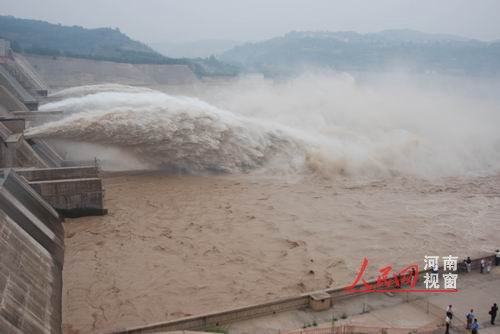A fresh round of sand washing in the Yellow River started yesterday as water was sluiced out of major reservoirs on the middle and lower reaches of the waterway in central China's Henan Province.

The on-going operation, the seventh since this technique was first used in 2002, works by discharging water from three reservoirs "Wanjiazhai, Sanmenxia and Xiaolangdi" to clear up the sediment in the river, the country's second-longest waterway. The speeding currents carry tons of sand into the sea.
The 12-day project is expected to enable the water to flow at a maximum volume of 3,900 cubic meters per second, according to the Yellow River Water Resources Committee in Zhengzhou, capital of Henan.
The Yellow River has been plagued by an increasing amount of mud and sand. Each year, the river bed rises as silt deposits build up, slowing the water flow in the lower reaches.
The provincial government has mapped out an emergency plan to address possible flooding in the Yellow River region. It urged the bolstering of dykes along the river so that no dyke would burst, even if floods occurred as the water flow reached 22,000 cubic meters per second, the maximum discharge capacity at the Huayuankou section of the river.
The China Meteorological Administration warned this month that the river was likely to flood during this year's rainy season, which runs from July to October.
Meanwhile, China has finished evacuating 111,476 people from an area near the epicenter of last month's earthquake to avoid secondary disasters triggered by heavy rains.
A total of 72,000 people in the quake epicenter Wenchuan County had been relocated hours before it started to rain on Wednesday night. The three-day mass relocation concluded at 8pm, said the Aba prefectural team for disaster prevention, just two hours before heavy rain hit the county.
Wu Zegang, deputy Party secretary of Aba, said the risks of inundation and geological disasters such as landslides would rise in the looming main flood season.
"The top priority of our relief work is to transfer the residents whose lives are threatened by secondary disasters to safer areas," Wu said.